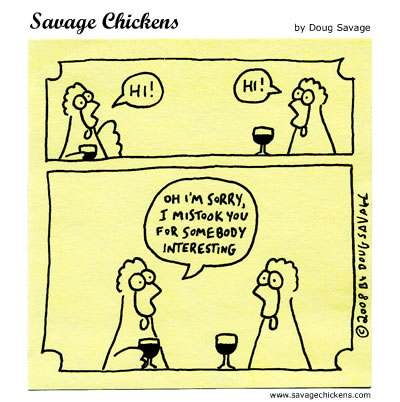Have you ever been mistaken for someone else? Here's how your personal brand reduces your risk of being a victim of mistaken identity.
When identity is mistaken
Cases of mistaken identity happen all the time and not always in the ways you might think.
Such as when…
- A credit company mixes up 2 people who attended the same school
- A coroner mistakes a car crash survivor for the victim
- Sportscasters think they're talking to a star player's father when it's just a fan
- A college professor is confused with a student murder suspect
Why there are so many examples of mistaken identity
If you've never been confused for someone else, it often happens like this.
A person approaches you, thinking that they've seen you before. However, as they get closer and especially once you open your mouth to reply to their inquiry, they realize that “they thought you were someone else.”
It always comes down to a lack of information.
In the examples above:
- The credit company had enough information to find 1 of 2 people but not enough – e.g a birthday – to distinguish between the two.
- The coroner based his identifications of the survivor and victim on strewn evidence and the opinions of friends and family instead of running scientific tests from the start.
- The fan and the player's father were wearing similar baseball caps when they were confused and the sports crew didn't have an actual photo of the father.
- Only a middle initial distinguished the professor's name from that of the murder suspect. The first photo that was put out to catch the murderer was actually an old photo of the professor.
So what can you do to prevent yourself from getting caught in such a mixup?
1) Lower your identity information barriers
If having the right information about you will keep people certain who they're dealing with, you need to make it as easy as possible for them to get the right information about you.
- Be listed in your local phone book.
- Carry identity information – driver's license or other – at all times.
- If you have an allergy to medication or other major health condition, wear a MedicAlert bracelet or similar.
- Make sure that your government agencies (and their databases) have the right information, both via their websites (online) & when you call them (offline) if the responses might differ.
- Have a web presence that appears high in search engine results pages, and make it clear how to contact you for further information.
- Complete and update your profile on the most-used social media networks in your area.
Ultimately- don't just be easy to find, be easy to find well.
2) Be unique and a standout
If lowering barriers to your personal ID information is the passive strategy to avoid mistaken identity, being a standout and building a strong personal brand is the active strategy.
The stronger your personal brand, the less chance that someone would confuse you with someone else, regardless of whether your personal brand name is Barack Obama or Oprah or something else.
The stronger your personal brand, the more people will doubt when they hear something that doesn't match your personal brand. It was a former student of the college professor who notified him that the media was portraying him as a murder suspect.
Conclusion
If your personal ID information strategy contains both passive and active elements, you probably won't be mistaken for anyone else anytime soon.
Have you ever been confused for anyone else in a significant way?
I originally published a version of this article on the terrific Personal Branding Blog.
If you like this, you'll also enjoy The Most Unexploited Tool in Personal Branding: Your Name
Subscribe to JobMob via RSS or email and follow me on Twitter for more ideas on how to rethink your job search.





Pingback: Jacob Share
Pingback: from Jerusalem
Pingback: Brand-Yourself
Pingback: Professional PUNCH
Pingback: Bruce Oliver
Interesting post, my favorite recent “identity confusion” was when the BBC interviewed a taxi-driver thinking that they are an IT expert to speak about Apple vs iMusic. Here is the link:
http://www.youtube.com/watch?v=pdyYe7sDlhA
Also, most of your examples could have happened even if you did extensive branding. If my CC company screws up my bill then (1) it is likely a system issue and not an information issue (2) how would I brand specifically to them anyway?
Great stuff!
I try to get around this by always re-introducing myself and reminding the person I’m talking to where we last met. It’s a kindness to others.